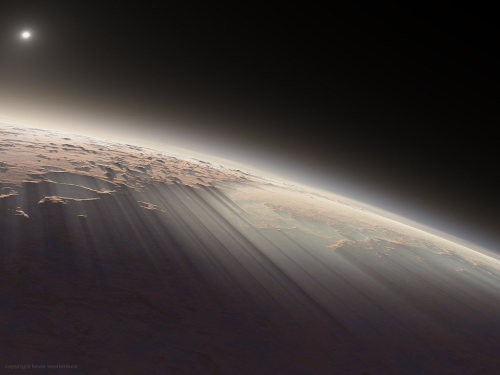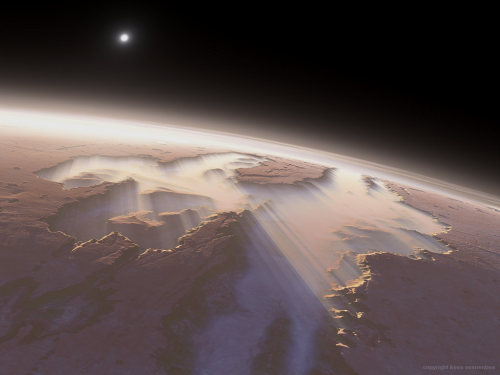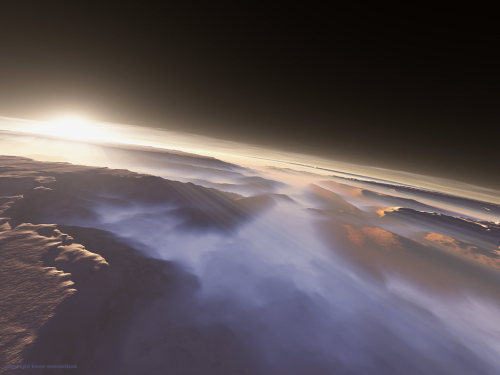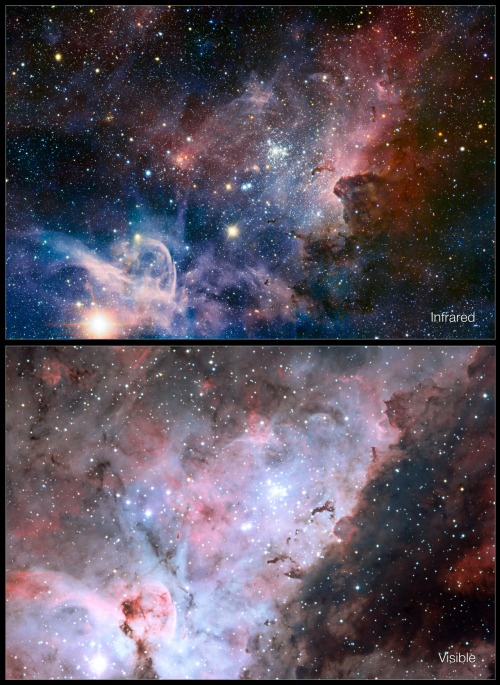Philae Found!

Philae found!
Less than a month before the end of the mission, Rosetta’s high-resolution camera has revealed the Philae lander wedged into a dark crack on Comet 67P/Churyumov–Gerasimenko. The images were taken on 2 September by the OSIRIS narrow-angle camera as the orbiter came within 2.7 km of the surface and clearly show the main body of the lander, along with two of its three legs. The images also provide proof of Philae’s orientation, making it clear why establishing communications was so difficult following its landing on 12 November 2014. Philae was last seen when it first touched down at Agilkia, bounced and then flew for another two hours before ending up at a location later named Abydos, on the comet’s smaller lobe.After three days, Philae’s primary battery was exhausted and the lander went into hibernation, only to wake up again and communicate briefly with Rosetta in June and July 2015 as the comet came closer to the Sun and more power was available. The discovery comes less than a month before Rosetta descends to the comet’s surface. On 30 September, the orbiter will be sent on a final one-way mission to investigate the comet from close up, including the open pits in the Ma’at region, where it is hoped that critical observations will help to reveal secrets of the body’s interior structure.
Credit: ESA
More Posts from Littlecadet-biguniverse and Others

Vdb 158 and PLN 110-12.1
Credit: Jimmy Walker


M8 - Lagoon Nebula Up Close
June is “Lagoon Month” from my latitude. The June and July New Moons will be dedicated to photographing this photogenic nebula. I have booked a camping trip in early June, so I should be able to start capturing some more photons then! :) Here’s my version with limited exposure time from 2013.







Morning On Mars
Martian sunrises, as seen by the HiRISE orbiter

a night with the stars will usually help
By: Jonah Reenders

Our Moon along with Jupiter and it’s 4 largest moons.
Image Credit & Copyright: Cristian Fattinnanzi

Infrared/visible-light comparison of the Carina Nebula
js

Crescent Nebula



Messier 1 - The Crab Nebula
Potentially Humanity’s First Historically Observed Supernova
The Crab Nebula is the first astronomical object identified with a historical supernova explosion. Around in the year 1054, Chinese astronomers identified a large bright object that suddenly and mysteriously appeared in the sky. The explosion was so bright that it was even visible during the day time.
700 years later the super nova remnant faded in brightness as it expanded and was nearly forgotten. The Super Nova Remnant was rediscovered in 1758 ( officially re-recorded) by Charles Messier while he was creating a catalog of mysterious objects that looked like comets but were not.
We now know that the beautiful Crab Nebula is the magnificent result of the death of a star, which was unknown to Charles Messier and the Chinese Astronomers that discovered the Object. Now, thanks to space telescopes such as Hubble and Chandra, we can image the Nebula in great detail. The bottom left image is of a small region of the Crab Nebula. It shows “Rayleigh–Taylor instabilities in its intricate filamentary structure” and gives scientists a better understanding of the death of stars. The image to the bottom left shows combined visible light data from Hubble and x-ray data from Chandra.
Credit: NASA/Hubble/Chandra

The Sunflower Galaxy
-
 amostpeculiarman reblogged this · 5 years ago
amostpeculiarman reblogged this · 5 years ago -
 pipsbadgerboots liked this · 5 years ago
pipsbadgerboots liked this · 5 years ago -
 gothasain liked this · 5 years ago
gothasain liked this · 5 years ago -
 linonataraj liked this · 5 years ago
linonataraj liked this · 5 years ago -
 the-magicalpotato liked this · 5 years ago
the-magicalpotato liked this · 5 years ago -
 shawnarichauthor liked this · 5 years ago
shawnarichauthor liked this · 5 years ago -
 pedrodlm liked this · 5 years ago
pedrodlm liked this · 5 years ago -
 theworldismyoysterandiamthepearl liked this · 5 years ago
theworldismyoysterandiamthepearl liked this · 5 years ago -
 16fahri liked this · 5 years ago
16fahri liked this · 5 years ago -
 tngbabe liked this · 5 years ago
tngbabe liked this · 5 years ago -
 dragonflames2061 liked this · 5 years ago
dragonflames2061 liked this · 5 years ago -
 chibidrow reblogged this · 5 years ago
chibidrow reblogged this · 5 years ago -
 a-golden-bear liked this · 5 years ago
a-golden-bear liked this · 5 years ago -
 britanniadoyle liked this · 5 years ago
britanniadoyle liked this · 5 years ago -
 fagdykefrank liked this · 5 years ago
fagdykefrank liked this · 5 years ago -
 universalyaccepted liked this · 5 years ago
universalyaccepted liked this · 5 years ago -
 millerscritters reblogged this · 5 years ago
millerscritters reblogged this · 5 years ago -
 thedreamerandthedream liked this · 5 years ago
thedreamerandthedream liked this · 5 years ago -
 backofthebookshelf liked this · 7 years ago
backofthebookshelf liked this · 7 years ago -
 mckitterick reblogged this · 7 years ago
mckitterick reblogged this · 7 years ago -
 mckitterick liked this · 7 years ago
mckitterick liked this · 7 years ago -
 sofiaanats-blog liked this · 8 years ago
sofiaanats-blog liked this · 8 years ago -
 tempusfugit-1-blog reblogged this · 8 years ago
tempusfugit-1-blog reblogged this · 8 years ago -
 sheepheadfred liked this · 8 years ago
sheepheadfred liked this · 8 years ago -
 ora-me-an-enemy-stand liked this · 8 years ago
ora-me-an-enemy-stand liked this · 8 years ago -
 tempusfugit-1-blog liked this · 8 years ago
tempusfugit-1-blog liked this · 8 years ago -
 nhboehm reblogged this · 8 years ago
nhboehm reblogged this · 8 years ago -
 dbean47 liked this · 8 years ago
dbean47 liked this · 8 years ago -
 pyaray liked this · 8 years ago
pyaray liked this · 8 years ago -
 jnmill12345 liked this · 8 years ago
jnmill12345 liked this · 8 years ago -
 stargateatl liked this · 8 years ago
stargateatl liked this · 8 years ago -
 ricardo424344 liked this · 8 years ago
ricardo424344 liked this · 8 years ago -
 littlecadet-biguniverse reblogged this · 8 years ago
littlecadet-biguniverse reblogged this · 8 years ago -
 ostentatiousrrex liked this · 8 years ago
ostentatiousrrex liked this · 8 years ago -
 irethnumenesse liked this · 8 years ago
irethnumenesse liked this · 8 years ago -
 f1ftyshadesofclay reblogged this · 8 years ago
f1ftyshadesofclay reblogged this · 8 years ago -
 f1ftyshadesofclay liked this · 8 years ago
f1ftyshadesofclay liked this · 8 years ago -
 urinetrouble liked this · 8 years ago
urinetrouble liked this · 8 years ago -
 kindasortalosst liked this · 8 years ago
kindasortalosst liked this · 8 years ago -
 almondjoy125-blog1 liked this · 8 years ago
almondjoy125-blog1 liked this · 8 years ago -
 omniscientbeet reblogged this · 8 years ago
omniscientbeet reblogged this · 8 years ago
GREETINGS FROM EARTH! Welcome to my space blog! Let's explore the stars together!!!
144 posts